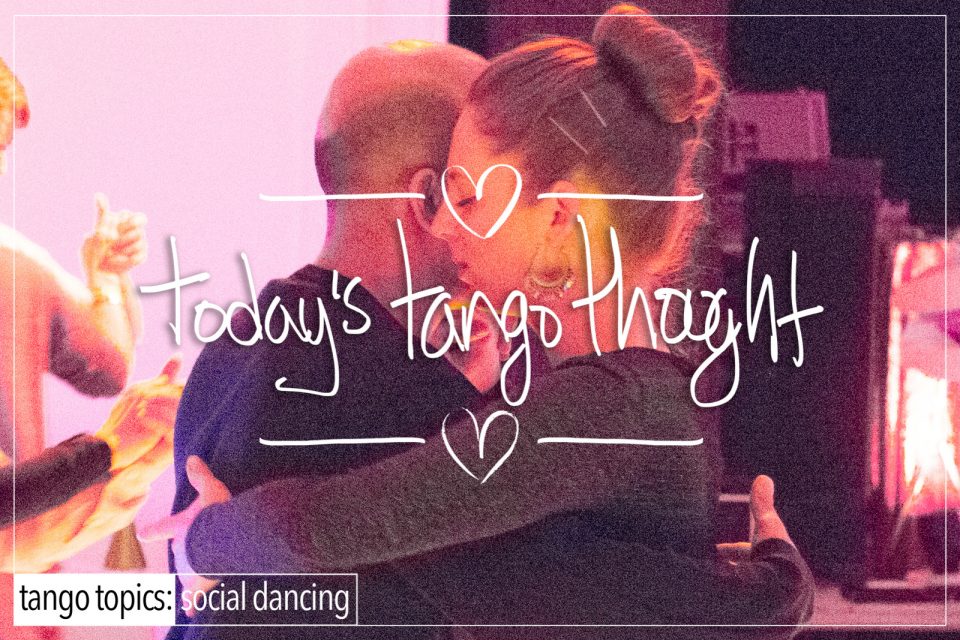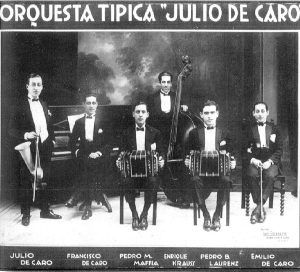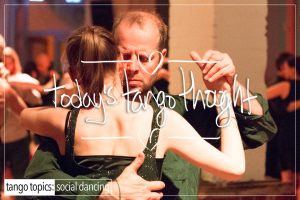You have local friends that you have acquired through the dance. They met you at a very specific point in your tango development. You’ve danced with them over and over again. You almost never say ‘no’ to them because they’re fun to dance with or they’re nice people. Over time you settle into a nice, almost comfortable routine of your dancing friends, where you’ll go to the practica or milonga, you’ll dance with J, then K, then L, then M, then N, rest, then dance with A, then B, then C, then D, rest, then J again, then M again, then A, and that’s your night right there. The next event. It will be the same people in a different order. The next event, same people different order. Over and over again for months on end.
Sound familiar ?
While this may sound like fun as this is part of the point of social dancing to make friends and to dance with them, understand something else that’s happening to you: You are dancing with the same people, over, and over, and over again.
At what juncture do you think you’re going to improve dancing with the same people ? Answer ? Never. This practice is akin to learning with beginners expecting that this will improve your understanding of technique. It won’t. It can’t. You need an experienced dancer to show you what desirable dancing is really like.
There is a point of diminishing returns in continuing down the same pathway with the same person doing the same thing over and over again. There is no growth in this. Don’t mishear this is as the dance should be all about growth, all about technique, or all about this or that. No. Think of this as a reminder that there needs to be an equal balance of growth and tango development in your tango life, as well as dancing with friends, study, practice, music, traveling for events, etc. lest you stagnate into “thud”, pulling, pushing, hanging, compression, and the ladies that sit, or the guys that stand! You need a constant stream of ‘better’, things that will challenge you, change you. And dancing with the same people over and over again over a long period of time you tend to live inside of an echo chamber that tells you everything is alright, when in fact, it may not be.
Let’s address the ‘pink’ elephant in the room that comes up when this topic is addressed. “What’s wrong with staying the same ?”. Try this on : You’ll go to dance with someone outside of your bubble/echo chamber and the experience is a lot like a box of chocolates. For you it may be delightful, but it’s the other side of the coin that you need to be concerned with. Why ? Because for them, it may not be ‘all that’. And because you’ve lived inside your bubble of sameness for so long you may not be aware of the signs that something is amiss and misread the situation, and thereby miss a really good opportunity to learn, to change, and to grow as a dancer. The goal here is not about perfection (which is how some people hear this feedback), but rather balance AND versatility! Growth is desirable. The real and palpable dancer is stagnation. Just as in life we should always be looking to create and never just float along for too long. It gets old after a while. The end result is that you become a desirable dancer to everyone that you dance with, always interesting, a pleasant experience across the board, instead of within your bubble.
Put another way: You need to dance with as many different people as possible, as often as possible, you want a vast array of tango experiences not just the same thing over and over again.











